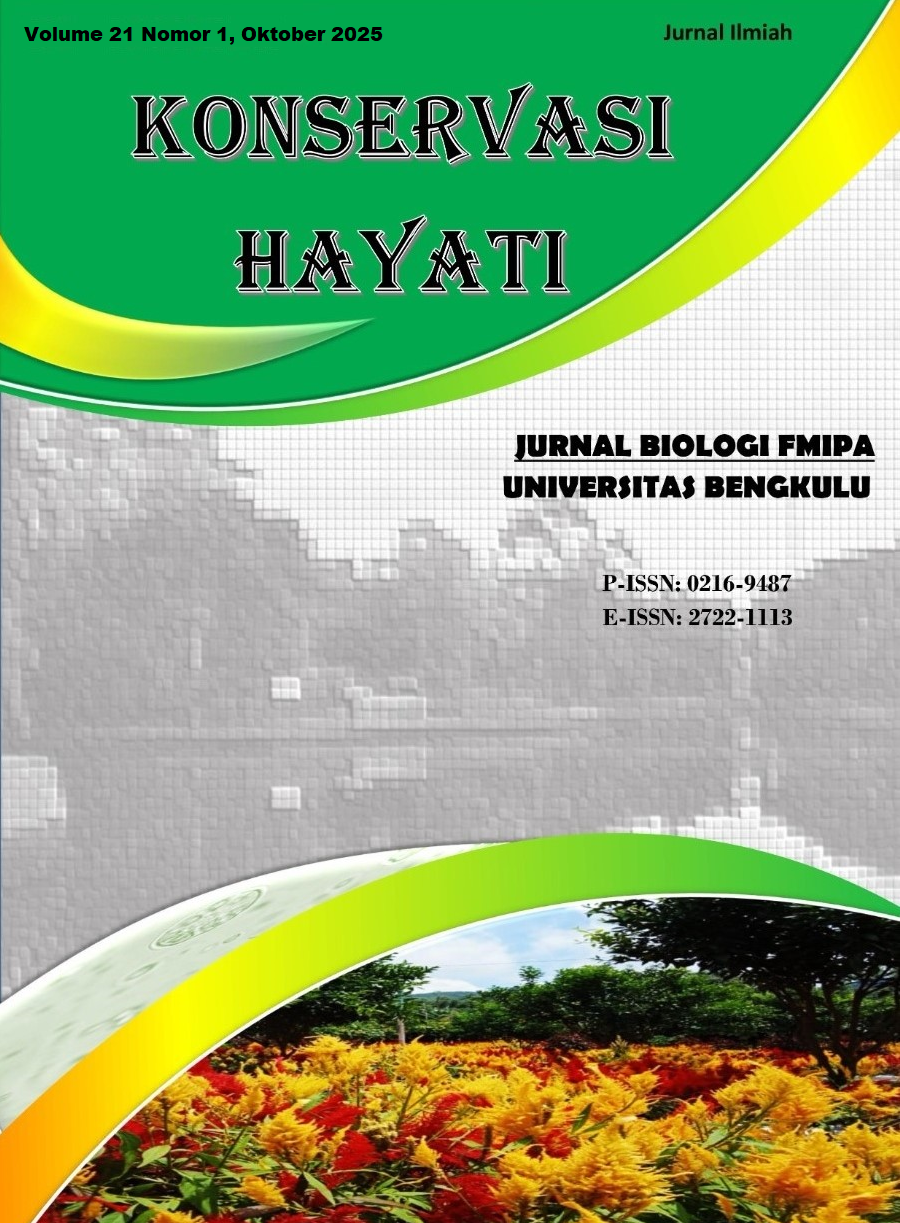Main Article Content
Abstract
The cultural, linguistic, and ethnographic diversity of Indonesia is attributable to the country's numerous ethnic communities. One of the tribes in Indonesia, the Lampung Pepadun in Lampung Province, has a unique marriage ritual that is of interest for academic investigation. This study aims to identify the types of plants used in the traditional wedding ceremony of the Lampung Pepadun people in Negara Batin and Pakuan Ratu Districts, Way Kanan Regency, as well as to understand the benefits or symbolic meanings of these plants in the wedding rituals. This research employs a qualitative method with data collection techniques including observation, documentation, and interviews. The sampling techniques used are snowball sampling and purposive sampling. The findings reveal that 17 types of plants are used in the Lampung Pepadun traditional wedding ceremony, namely areca nut, Bryophyllum (cocor bebek), pandan water/rumbai, peanuts, cinnamon, henna leaves, banana, jasmine flowers, corkwood, coconut, betel leaves, rice, mini bamboo grass, sugarcane, gambier, coffee, and tobacco. Thus, it can be concluded that the Lampung Pepadun traditional wedding ceremony in Way Kanan Regency involves the use of 17 types of plants, each of which holds specific symbolic meanings and benefits in the ritual.
Article Details
Copyright (c) 2025 Ovi Prasetya Winandari, Dwijowati Asih Saputri, Oktaria Oktaria

This work is licensed under a Creative Commons Attribution-ShareAlike 4.0 International License.
Authors who publish in this journal agree with the following terms:
- Authors retain copyright and grant the journal right of first publication with the work simultaneously licensed under a Creative Commons Attribution-ShareAlike 4.0 International License that allows others to share the work with an acknowledgement of the work's authorship and initial publication in this journal.
- Authors are able to enter into separate, additional contractual arrangements for the non-exclusive distribution of the journal's published version of the work (e.g., post it to an institutional repository or publish it in a book), with an acknowledgement of its initial publication in this journal.
- Authors are permitted and encouraged to post their work online (e.g., in institutional repositories or on their website) prior to and during the submission process, as it can lead to productive exchanges, as well as earlier and greater citation of published work (See The Effect of Open Access).
- This work is licensed under a Creative Commons Attribution-ShareAlike 4.0 International License.
